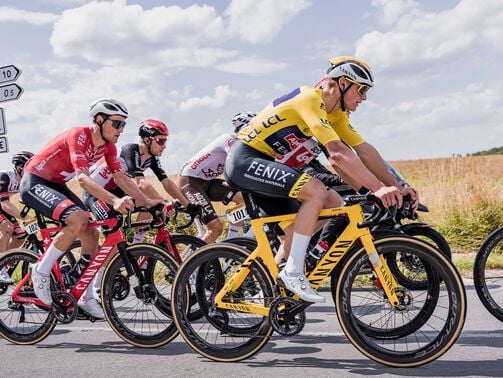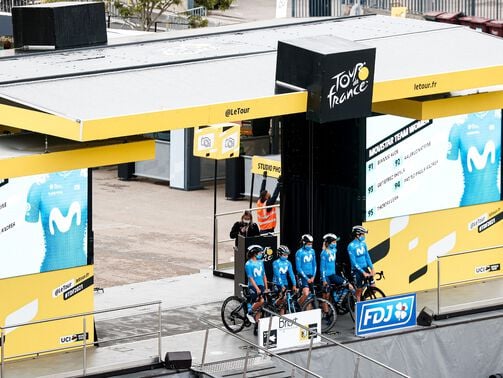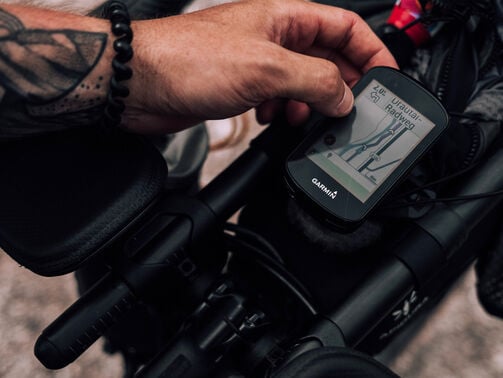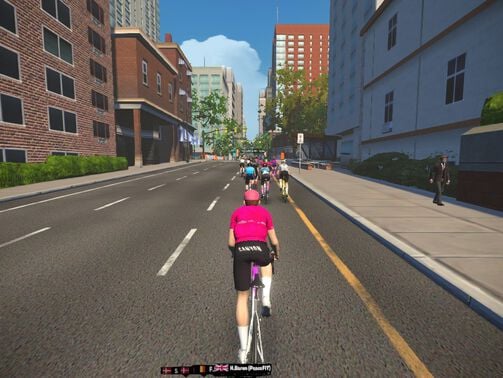The Most Iconic Climbs of the Giro d'Italia
Every mountain-obsessed cyclist aims to reach the “Passo dello Stelvio” sign at least once in their life. Here are the highest climbs tackled in the Giro d'Italia over the decades.
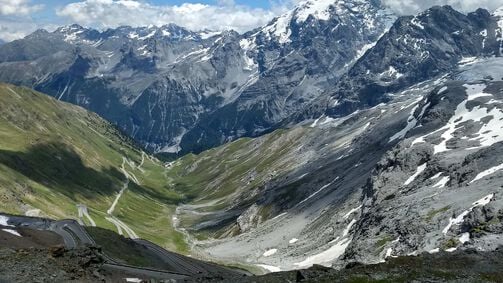
Every road cycling enthusiast dreams of conquering an epic Alpine pass at least once in their lives. On the slopes of these mountains, some of the greatest duels in Grand Tour history have taken place.
These mountain passes bring out the courage, determination, and bravery that define the greatest heroes of cycling – names like Gino Bartali, Alfredo Binda, Marco Pantini, and perhaps the greatest of them all, Fausto Coppi. Nicknamed Il Campionissimo (Champion of Champions), Coppi won the Giro an astounding five times thanks in large part to his climbing prowess. In honor of Coppi, Giro organizers introduced the Cima Coppi, the title given to the highest point of each year’s Giro d'Italia. Bonus points are up for grabs on summit finishes and to the first riders over that mountain. The Cima Coppi is a piece of world cycling history and has made some of the most spectacular Alpine passes legendary.
Each climb is totally unique, defined by its length and gradient. Luckily, Canyon offers a bike that’s designed to conquer each unique challenge.
For shorter climbs, it might be a good option to choose an aerodynamic bike: the Aeroad is unbeatable once you get over the top. If you want to tackle a longer route, or maybe try a double alpine pass as many amateurs do riding Stelvio and Gavia in the same day, you can choose the Endurace; a bike with a more relaxed geometry that guarantees a comfortable position even after many kilometres. But the unrivalled queen of the mountains is the grimpeur's bike of choice: the
Ultimate. Get ready to be clipped in and ride!
Top 5 Giro d'Italia climbs to ride:
Stelvio Pass
Location: Border of South Tyrol and Valtellina
Elevation: 2758m
Max. gradient: 12%
Distance: 26km
Pass opening times: May - November
Giro d'Italia Cima Coppi editions: 10
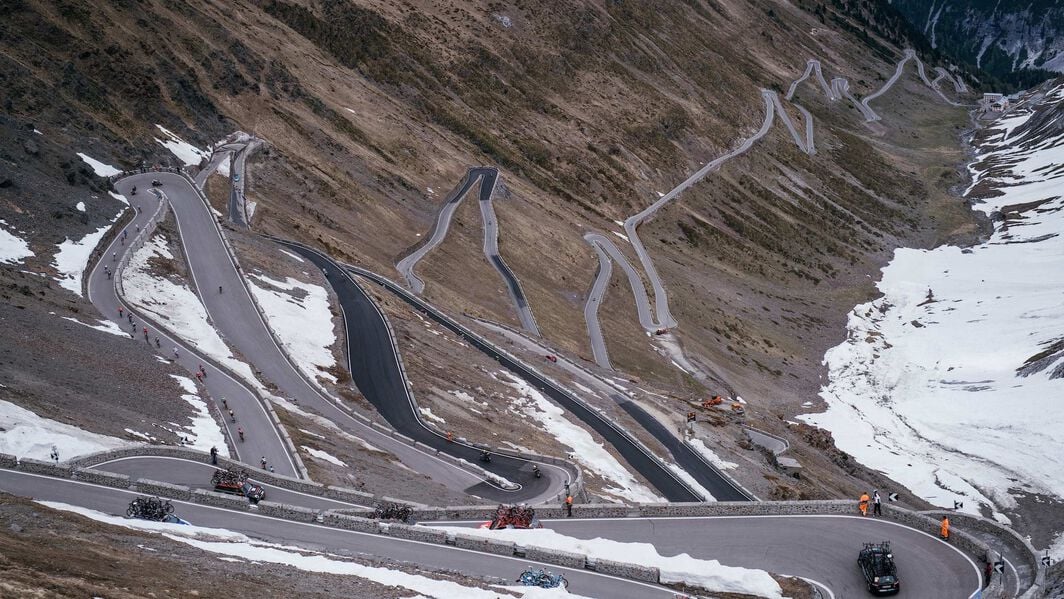
The Queen of Italian road cycling, the mighty Stelvio Pass is the ultimate Cima Coppi, which at 2758m is the highest point ever reached by the Giro. The pass was included for the first time in the route in 1953: the edition that was the scene of one of the last great exploits of Fausto Coppi.
The pass can be reached from three sides. The toughest is the South Tyrolean one starting from Prato allo Stelvio and climbing for almost 26km with gradients up to 12% in the last kilometre before the KoM. The total pedalled elevation gain is over 1800 metres: the first section is a false flat before snaking its way up the 48 hairpin turns with average gradients around 8-9%. A challenge to cyclists, we think you'll agree!
The second option is to start from Bormio. From this slope the climb is about 21.5km and there are 40 hairpin turns to face. The total elevation gain is less than on the other side (about 1500 meters) and the average gradient is 7% with peaks of 12%.
The third route leaves the Swiss town in Val Müstair and reconnects to the road from Bormio at the Umbrail Pass. The road leading to the Swiss-Italian pass is about 13km long, it's narrow and steep with peaks up to 12% and a difference in elevation of more than 1440 meters.
The Stelvio Pass has been climbed 13 times at the Giro d'Italia, and has been designated "Cima Coppi" in each of these editions since 1965. The Stelvio was supposed to be the Cima Coppo of the 2024 edition, but the threat of avalanches on its snowy slopes caused race organizers to re-route the stage. Dario Cataldo (once a member of the Movistar team sponsored by Canyon) was the first to reach the summit in 2014 despite the harsh weather conditions and snow on the road. We asked him what it's like to be first on the top of the Giro d'Italia:
“I have always considered the Stelvio as the Queen of climbs. From the day before the race, I felt that I had an appointment with her, and on that day, between grit and fear I decided that the cold day had to be faced head on. 3km from finish line I wanted to conquer it, regardless the result of the stage. I no longer felt the cold, nor the fatigue, just the desire to conquer the special Cima Coppi that meant so much to me. In 2016 Cima Coppi was won by Michele Scarponi and the following year the stage was dedicated to him with the special double Stelvio stage. These are just some small coincidences and anecdotes that create a strong bond with a climb where I have experienced great joy and deep sorrows. For this reason, for a cyclist, a road is much more than just a strip of asphalt.”
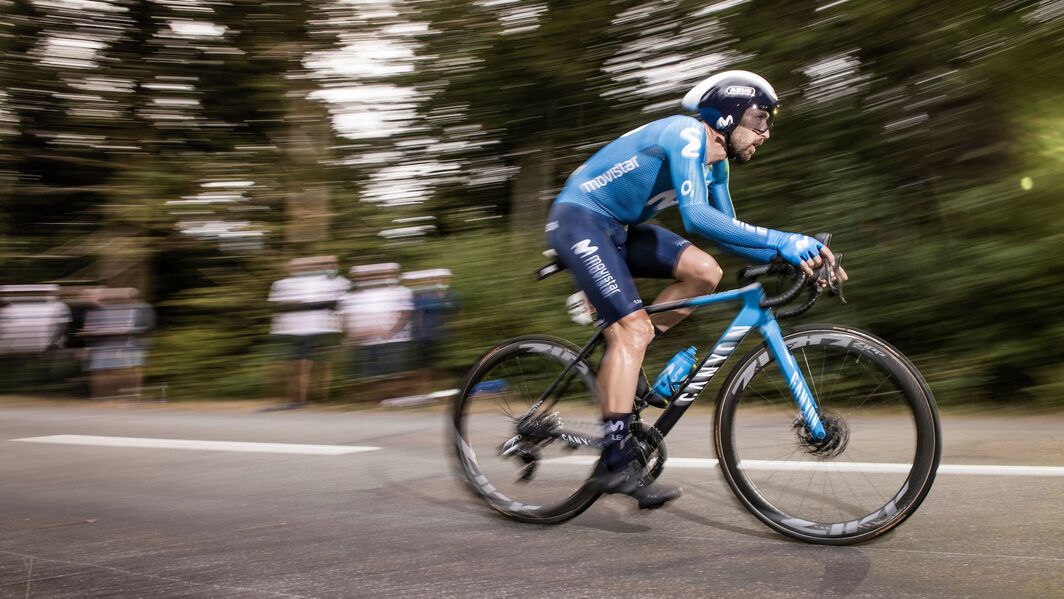
Each year the Stelvio National Park administration organizes the Stelvio Bike Day. On that day the roads are closed to all traffic except for bicycles. Mark your calendar: 31 August 2024 to enjoy a unique experience on the most famous Italian alpine pass.
I rode the Stelvio’s car-free day myself several years ago. Starting from Bormio, I pedaled upward, watching the road narrow and the grades get steeper heading into the switchbacks. I rose from my saddle, mimicking the thousands of other riders who have ridden this infamous Stelvio mountain pass before me, hoping that I could coax one more gear out of shifters to make the leg-battering climb the slightest bit easier. When I finally reached the top of the iconic 9,045-foot peak, out of breath from both exertion and the thinning oxygen, I knew I had accomplished something truly special.
Pordoi Pass
Location: Dolomites
Elevation: 2239m
Max. gradient: 15%
Distance: 12km
Giro d'Italia Cima Coppi editions: 14
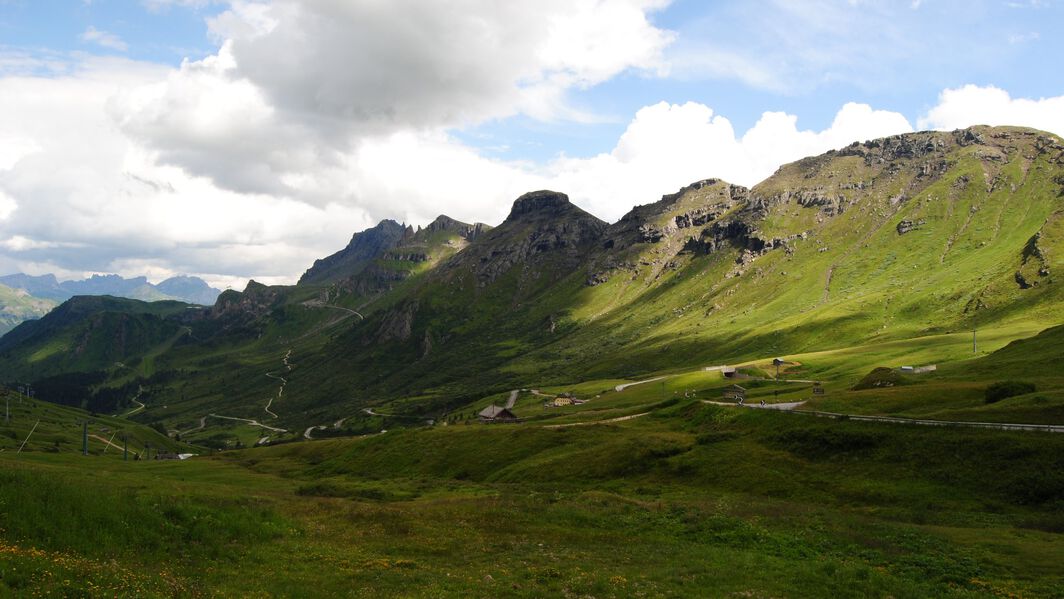
Now a historical climb of Italian cycling, the Pordoi Pass was introduced to the race for the first time in 1940. That year the summit was conquered by a couple of well-known cyclists after a breakaway: Coppi and Bartali. Since then, it has been featured in 40 editions of the race. The last time the Giro traveled across the Pordoi Pass was 2022, when Alessandro Covi (UAE Emirates) was the first over the summit enroute to his lone Giro stage win that season.
It's a popular destination without impossible gradients, unlike other famous Alpine climbs and crosses breathtaking landscapes. The road is the second highest surfaced road traversing a pass in the Dolomites and is included in the Granfondo Sellaronda and Maratona dles Dolomites.
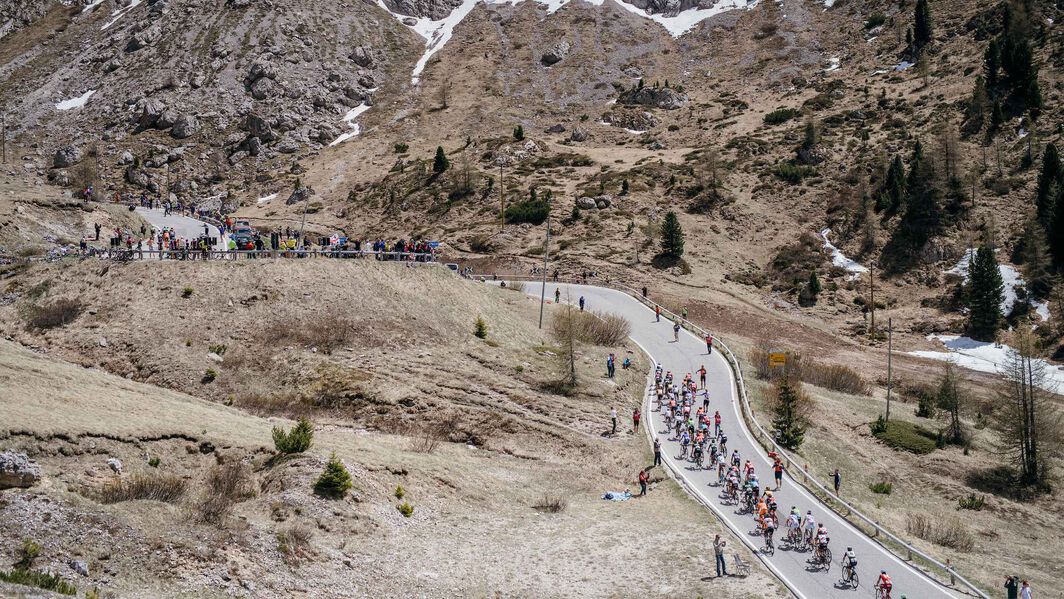
The summit can be reached from two sides. The ascent from the Trentino side starts from Canazei and is 13km long with a total elevation gain of 789m and an average gradient of 6%. From Arabba, the climb is shorter (9.2km) and has less height gain (637m) but has steeper gradients of up to 10%. The paved road is quite wide and the bends are gentle until the last hairpin turns.
At the summit, in addition to the classic photo with the road sign, do not miss the memorial to “Champion of Champions” Fausto Coppi.
Gavia Pass
Location: Italian Alps, Bormio
Elevation: 2621m
Max. gradient: 16%
Distance: 17.3km
Pass opening times: May - October
Giro d'Italia Cima Coppi editions: 7
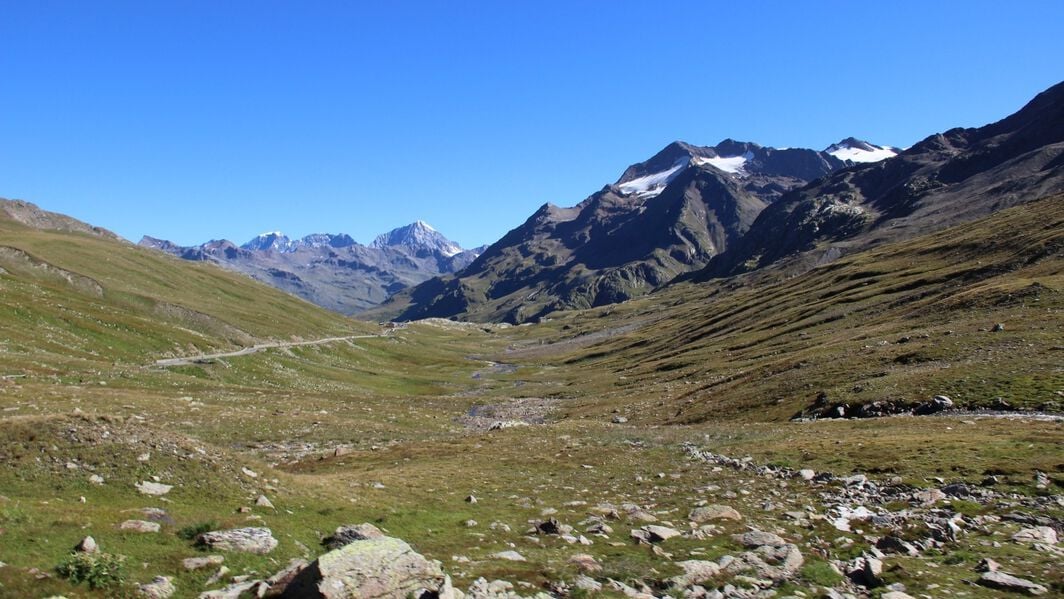
One of the most popular destinations for cyclists, the Gavia has many records: it is the longest Alpine climb, with the highest elevation gain and reaches a considerable altitude.
The pass has been featured in 14 editions of the Giro d’Italia, though the organizers have often had to reroute the race due to bad weather conditions. In the 1988 Giro, the race passed over the Gavia in a snowstorm, making for one of the most epic stages in race history. Entering the day in fifth-place in the standings, American Andy Hampsten attacked the other major contenders at the foot of the Gavia, utterly demolishing the field. He wouldn’t win the stage – that honor went to Dutch rider Eric Breukink – but did take the pink jersey en route to becoming the first (and only) American Giro champion.
Swiss rider Johan Tschopp summited the Gavia first when the mountain was last Cima Coppi in 2010.
Known as the longest alpine climb it also has high gradients, especially on the Brescia side starting from Ponte di Legno. This section was only tarmacked in the nineties and it is popular among cyclists. The climb from Bormio has been used in one edition of the Giro so far. The Valtellina side is less steep but there are more kilometres to cover to reach the summit.
I have experienced great joy and deep sorrows on climbs. For this reason, a road is much more than just a strip of asphalt.
Dario Cataldo - Team Movistar
Colle dell'Agnello
Location: Hautes-Alpes (France), Province of Cuneo (Italy)
Elevation: 2744m
Max. gradient: 15%
Distance: 25km
Pass opening times: May - November
Giro d'Italia Cima Coppi editions: 4
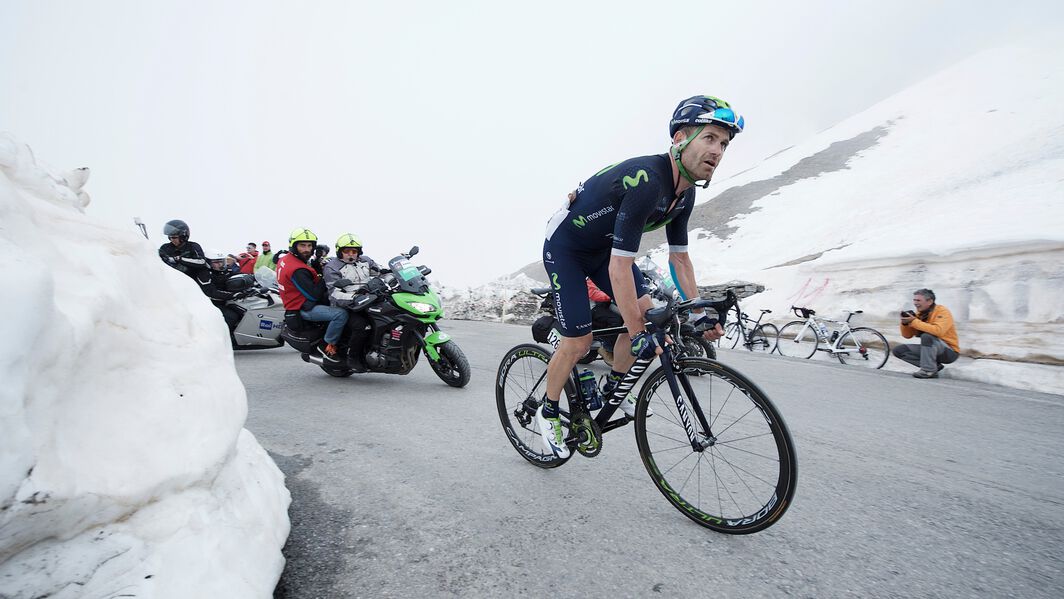
Reaching the top of Colle dell'Agnello by bike is a rite of passage for every committed cyclist. It has the reputation of being one of the most exhausting passes in the entire Alps, and without a doubt it's a great personal challenge for many amateurs. It has been tackled four times at the Giro d'Italia; the most recent in 2016 was won by the shark himsel, Vincenzo Nibali. Since it is located at the Italy-France border, it also featured in two editions of the Tour de France.
Colle dell'Agnello is classified as a long alpine climb at 25km long and recommended only for experienced cyclists. The first 7km are not steep and feature several false flats. After Chianale, the hardest section rears its head for 9 km with an average gradient of 10% and peaks over 14%. From here it’s better to set a steady tempo until the summit. The effort is rewarded by far-reaching views of the French Alps and your arrival is marked by the classic road sign alongside the border sign and the ancient border stone.
For cyclists focused on performances, there is a timing system for the climb. Ready for the challenge?
Colle delle Finestre
Location: Italian Alps
Elevation: 2178m
Max. gradient: 14%
Distance: 18.6km
Pass opening times: June - November
Giro d'Italia Cima Coppi editions: 2
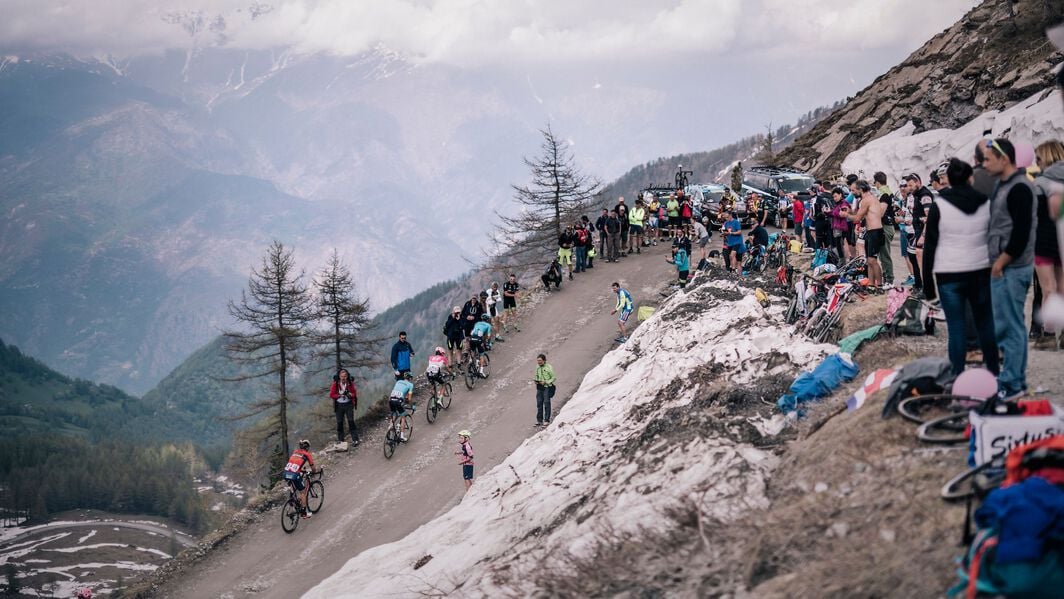
Colle delle Finestre is well-known as one of the hardest climbs in Europe after Zoncolan, Mortirolo and Angliru. The climb is 18.6 kilometres long at an average of 9.1% and a total elevation gain of almost 1700 metres. A further challenge to reach the top are the final unpaved eight kilometres. The riders of the Giro d'Italia had to tackle this "terrifying" ascent, as Gilberto Simoni defined it in 2005, four times. During the 2018 Giro, British rider Chris Froome launched an incredible solo attack on the Cima Coppi climb that would vault him into the pink jersey and the overall victory that year.
The most frequented route, selected in the itinerary of the race course, is the one from Susa Valley. The first section has high gradients, constant in all the 33 hairpin turns. After leaving the asphalt, you’ll have to ride 8 km of dirt road. Here the surface is not always in good conditions and presents a high risk of punctures. You can ride your road bike up there, but this is the ideal terrain for a gravel bike. This category has now many options with light frames and builds, as our Grail CFR. These models are well suited for such challenges in mixed terrain conditions.
Bonus climbs: must-dos on your cycling bucket list
These two climbs are great classics of road cycling despite never having been designated as “Cima Coppi” for their relatively low altitude. Of course, we're talking about Mortirolo and Zoncolan. Loved and feared for their gradients of over 20%, they are a must on every brave road cyclist's bucket list.
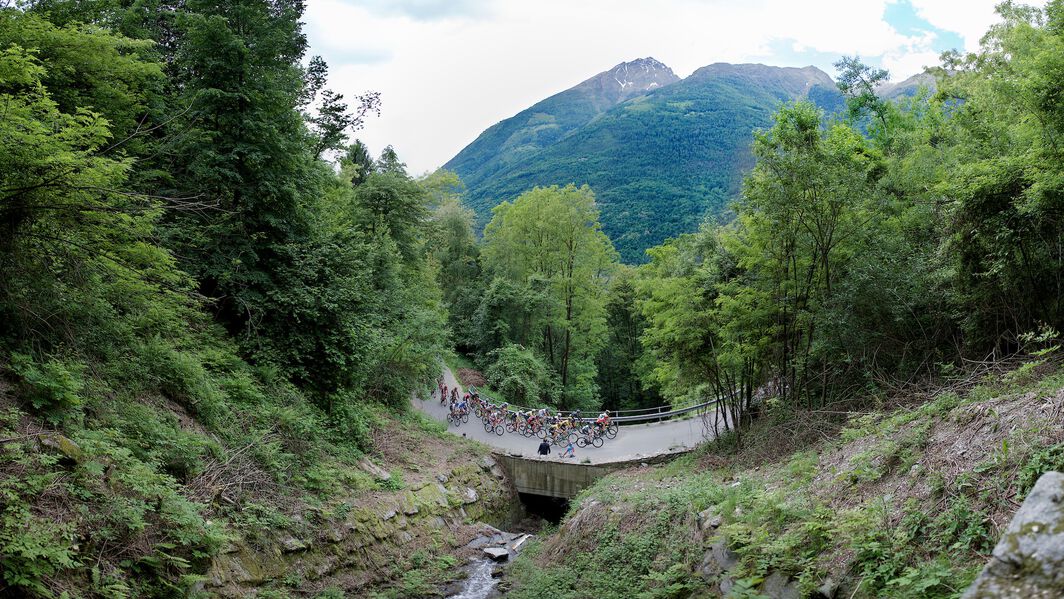
The Mortirolo Pass is a mountain road that connects the province of Sondrio and Brescia in northern Italy. It’s one of the most demanding climbs in professional road bike racing, and it’s very popular thanks to its numerous inclusions in the Giro since 1990. The mountain pass can be climbed from three roads, although the one from Valtellina is the most famous for its steep gradients. The climb to the summit is 12.5 kilometres long with a total height gain of 1300m and maximum gradient being 23%. Dutch rider Koen Bouwman summited the climb first during the Mortirolo Pass’ last appearance in 2022. Not only did he win the stage, but he also would win the mountains classification that year.
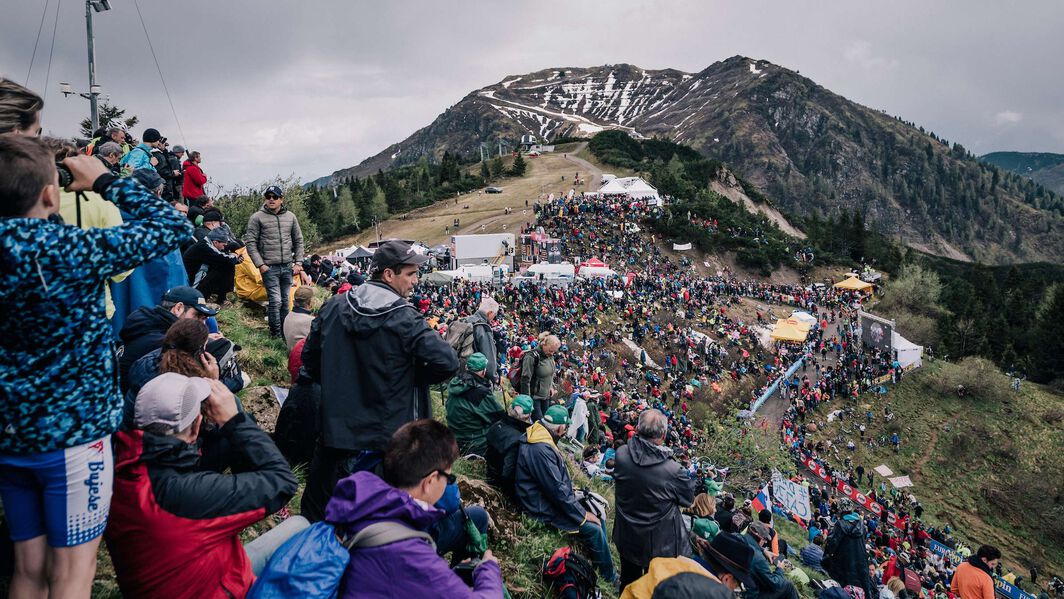
Another legendary and leg-burning climb that has become popular thanks to the Giro is the one that leads to the top of Monte Zoncolan. A "short" (10.5 km) but really intense climb, the total elevation gain is 1210m with an average of 11.6% and maximum gradient of 22%. Italian Lorenzo Fortunato was the first to summit the Zoncolan during its last inclusion in 2021, winning the stage.
Canyon on the Giro d'Italia Climbs
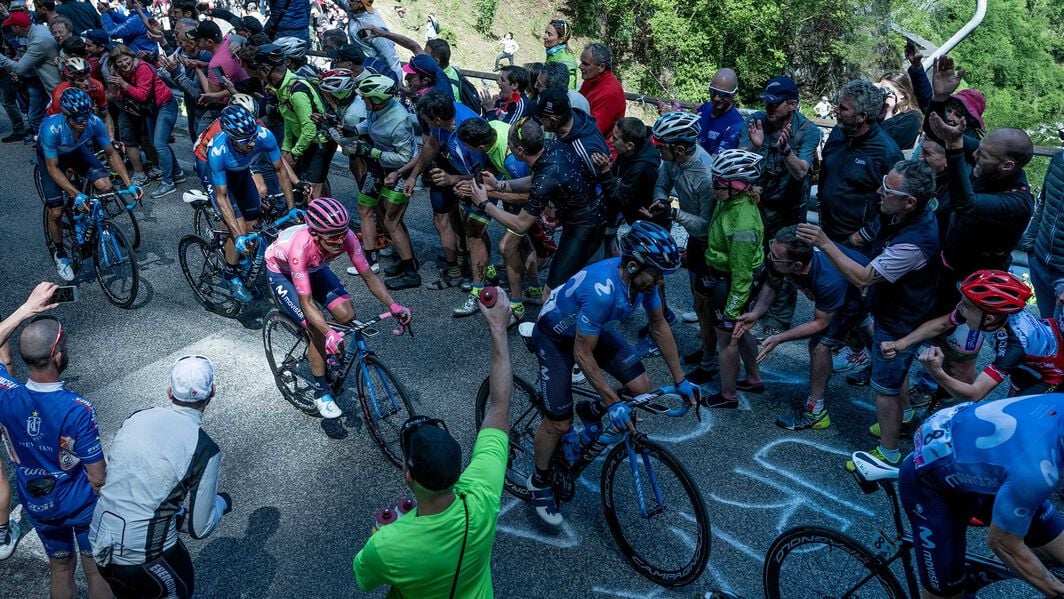
Canyon’s most successful year at the Giro was 2019, when Richard Carapaz won the general classification, Mikel Landa finished fourth, and Movistar won the Super Team prize. That year, the Movistar team really took charge in the mountains.
The Cima Coppi, initially planned on the Gavia, was cancelled due to the snow. The new Cima Coppi was Passo Manghen in stage 20. In the final kilometers of this stage, Landa and Carapaz caught the breakaway, but it wasn't enough to win the stage. Pello Bilbao crossed the line first in the last sprint and the Movistar duo finished second and fourth.
In the 2023 Giro, Einer Rubio (Movistar) won a mountainous stage 13, conquering three Cat 1 climbs in the process. He would later finish just outside the general classification top 10.
Have you got what it takes?
What do you need to do to reach the top of these great mountains? Some training, a great bike, and the willpower to grind your way up to the top. Ready, steady, ride!
Did this article help?
Thank you for your feedback
